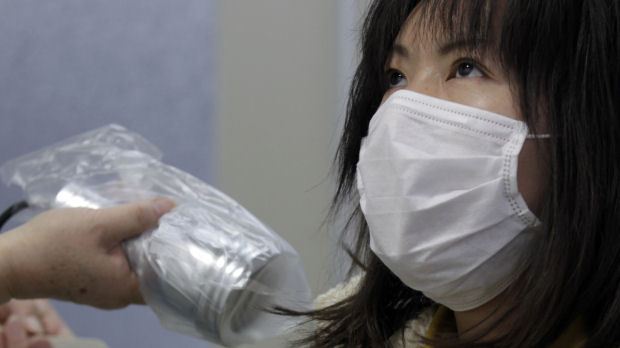Japan nuclear setback as radiation rises at Fukushima plant
Workers at Japan’s Fukushima nuclear plant have been evacuated after radioactivity in the water at reactor number 2 increased above the the usual limit. Radiation levels in Tokyo remain normal.
Officials originally said radiation in the water of the Number 2 reactor was measured at more than 1,000 millisieverts an hour, the highest reading since the massive earthquake and tsunami in Japan.
But plant operator Tokyo Electric Power Co. later said the extremely high radioactivity readings might have been wrong, adding the levels were being re-checked.
Despite the mistake, the radiation spike was still high enough to evacuate workers.
The latest radiation scare is confined to inside the reactor. Radiation levels in the air beyond the evacuation zone and in Tokyo have been in normal ranges.

The Japanese government said that, overall, the situation was unchanged at the plant which lies 240 km (150 miles) north of Tokyo, even if there were hitches from time to time.
“We did expect to run into unforeseen difficulties, and this accumulation of high radioactivity water is one such example,” Chief Cabinet Secretary Yukio Edano told a news briefing.
The International Atomic Energy Agency (IAEA) has warned the nuclear emergency could go on for weeks, if not months.
Read more: Japan: tsunami to nuclear crisis
Tokyo Electric Power Co engineers have been working to stabilise the situation at the Fukushima Daiichi plant since the earthquake and tsunami knocked out the back-up power system needed to cool the reactors.
The operation has had to be suspended several times due to explosions and spiking radiation levels inside the reactors, in a crisis that has become the worst nuclear emergency since Chernobyl.
Radiation levels in the sea off the plant rose on Sunday to 1,850 times normal from 1,250 on Saturday, Japan’s Nuclear and Industrial Safety Agency said.
“Ocean currents will disperse radiation particles and so it will be very diluted by the time it gets consumed by fish and seaweed,” said Hidehiko Nishiyama, a senior agency official.
Several countries have banned produce and milk from Japan’s nuclear crisis zone and are monitoring Japanese seafood over fears of radioactive contamination.
Political impact
The crisis at the plant has overshadowed a relief and recovery effort from the magnitude 9.0 quake and the huge tsunami it triggered that left more than 27,100 people dead or missing in northeast Japan.
The first opinion poll to be taken since the disaster struck showed that approval ratings for Japanese Prime Minister Naoto Kan had edged higher, to 28.3 percent, but more than half disapproved of how the nuclear crisis had been handled.
Prior to the earthquake, Kan’s approval rating had sunk to around 20 percent, opposition parties were blocking budget bills to force a snap election that his party was at risk of losing, and critics inside his own camp were pressing him to quit.
Photo gallery - Japan quake, tsunami and nuclear crisis
The survey published by Kyodo news agency showed that nearly two-thirds of respondents were in favour of a tax increase to help fund recovery in the earthquake-torn northeast.
The government estimated last week the material damage from the catastrophe could top $300bn, making it the world’s costliest natural disaster.
In addition, power cuts have disrupted production while the drawn-out battle to prevent a meltdown at the 40-year-old plant has hurt consumer confidence and spread contamination fears well beyond Japan.
Amano, a former Japanese diplomat who made a trip to Japan after the quake, said authorities were still unsure about whether the plant’s reactor cores and spent fuel were covered with the water needed to cool them.
He said he saw a few “positive signs” with the restoration of some electric power to the plant, but added: “More efforts should be done to put an end to the accident.”
-
Latest news
-
As India goes to the polls in the world’s largest election – what do British-Indians think?6m

-
Tees Valley: Meet the candidates in one of the biggest contests coming up in May’s local elections4m

-
Keir Starmer says public sector reform will be a struggle7m

-
Nicola Sturgeon’s husband Peter Murrell charged with embezzlement of funds from SNP1m

-
Ukraine might finally get $60billion in American weapons and assistance to defend against Russia3m

-




